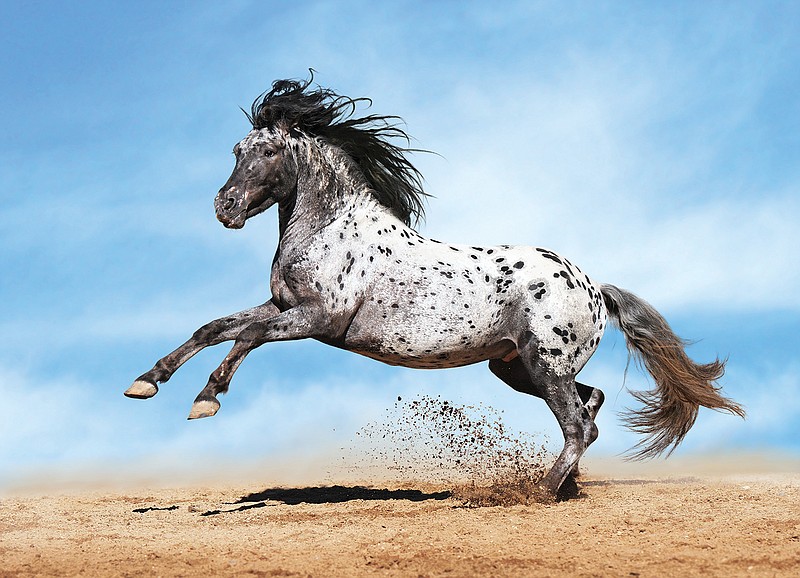The Appaloosa horse is often noticed for its trademark spots but its history is also a colorful one.
Sadly, the breed almost became extinct at one time but then made a comeback thanks to horse breeders with an interest in the Appaloosa.
Artwork depicting prehistoric horses with leopard spotting exists in prehistoric cave paintings in Europe, according to The New Encyclopedia of the Horse by Elwyn Hartley Edwards.
In North America, the Nez Perce people of what today is the United States Pacific Northwest developed what is now known as the Appaloosa. The Nez Perce were known as skillful horse breeders, and by the mid-1700s they practiced a selective breeding policy. They gelded or traded horses that were not to their breeding standards.
Although color was important to them, the Nez Perce required above all else that their horses be hardy, practical workhorses suitable for both war and hunting. Settlers once referred to these spotted horses as the "Palouse horse" or "A Palouse" possibly after the Palouse River, that ran through the heart of Nez Perce country. Gradually, the name evolved into Appaloosa.
The Appaloosa breed was almost wiped out 70 years later when the U.S. government was seizing tribal lands and moving the natives to reservations.
Under their leader, Chief Joseph, the Nez Perce conducted a fighting retreat, trying to reach sanctuary in Canada. However, after a march of about 1,300 miles they were forced to surrender in Montana. Many of their Appaloosas were slaughtered or given away.
The breed dwindled in numbers and almost became a footnote in the story of the West.
A revival of the breed began in 1938, when a historian named Francis Haines took an interest in promoting the animal.
On the basis of a few surviving descendants of the Nez Perce horses, the Appaloosa Horse Club was formed in Idaho. In less than 50 years, the Appaloosa breed registry became the third largest in the world.
The modern Appaloosa is primarily a pleasure horse used for western and long-distance riding. The body type varies because there has been much crossing with the Quarter Horse.
Appaloosas can have one of several different patterns. These include:
Blanket or snowcaps, which include a solid white area over the hip area.
Blanket with spots, which is a white blanket that has dark spots within the white.
Leopard, which is a white horse with dark spots that flow over the entire body.
Snowflake, which is a horse with white spots or flecks on a dark body.
There can even be solid colored Appaloosas.
Other physical features of the Appaloosa include the area of the eye surrounding the iris being white and resembling a human eye. They also have mottled skin on the muzzle and striped hooves that are very sound and are considered to be more resilient than those of other breeds.
Unfortunately, a genetically-linked condition is linked to blindness in Appaloosas.
Appaloosas have a greater risk of developing Equine Recurrent Uveitis than than all other breeds combined. Up to 25% of all horses with ERU may be Appaloosas. Uveitis in horses has many causes, including eye trauma, disease and bacterial, parasitic and viral infections, but ERU is characterized by recurring episodes of Uveitis, rather than a single incident.
Research is still being done regarding ERU and horse rescues across the country often include at least one blind Appaloosa.
Though not all adjust well to losing their sight, many do and are still trained and worked. Some stay family pets and most are known for their "hardiness and willing nature," according to the New Encyclopedia of the Horse.
Haines summed up the Nez Perce tribe's pride in the Appaloosa. "The Nez Perce claimed that these animals were doubly advantageous: they were speedy, tough, intelligent and hardy," he wrote in the text of "Appaloosa: The Spotted Horse in Art and History."

